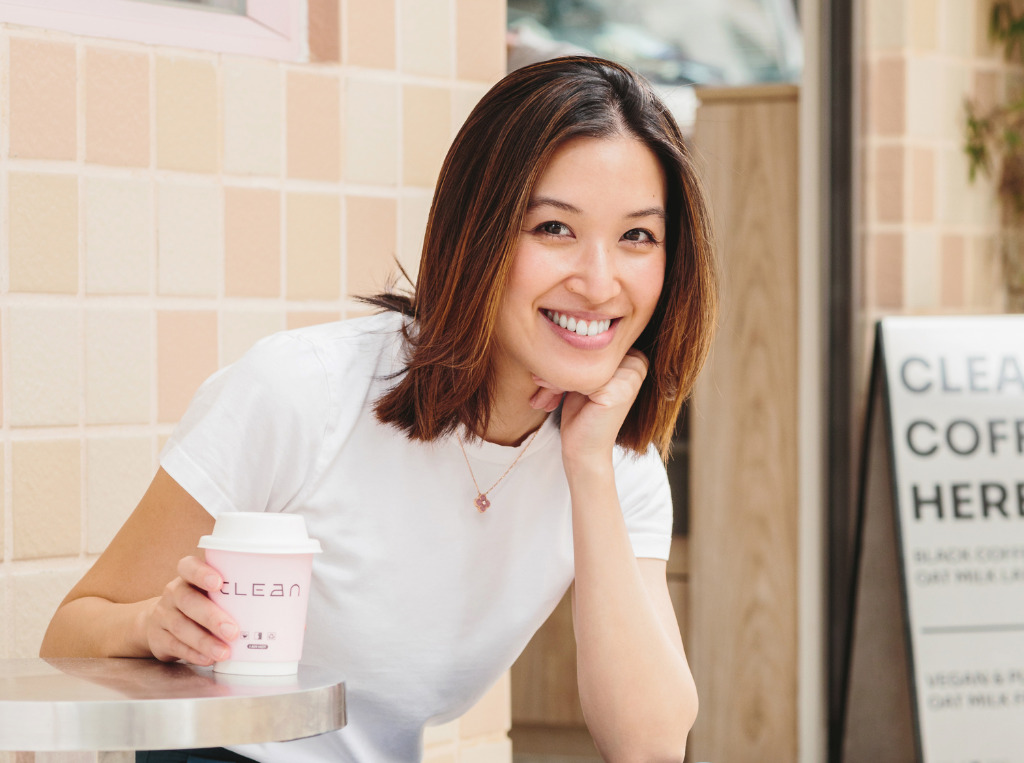My Beautiful Cafe-Launderette: Clean Coffee’s Cynthia Lok Talks Oat Milk, Sustainability & Sourcing
9 Mins Read
Hong Kong-based Clean Coffee is a sustainable specialty coffee business whose flagship café doubles as a launderette. Its co-founder Cynthia Lok met Green Queen to talk about all things coffee, sustainability, oat milk surcharges and consumer attitudes in Hong Kong.
Cynthia Lok and I are sitting on the steps outside her coffee shop in Hong Kong’s Sheung Wan district. She’s sipping an oat milk latte she made herself, complete with latte art.
Lok launched Clean Coffee in 2021 with her brother Bryan, pivoting from a brand communications background. Her café-cum-launderette is all about sustainability. Unlike the majority of coffee shops in the world, bar a few exceptions, oat milk is default at Clean Coffee, while dairy has a surcharge – higher carbon footprint, higher price. Bringing your own cup doesn’t get you a discount, but not using your own sets you back a couple of bucks. And as for the laundry, the shop prescribes eco-friendly detergents and cold-water washes.
It’s an intriguing and refreshing concept, and one we talk about for the best part of 50 minutes, while it drizzles in batches and traffic passes us by. Clean Coffee has another branch in Tsim Sha Tsui, where it has pioneered a tap-and-go concept – but Lok is planning on closing that outlet and pivoting to B2B, focusing on the tech aspect of the taps and how she can help foodservice businesses better serve their customers.
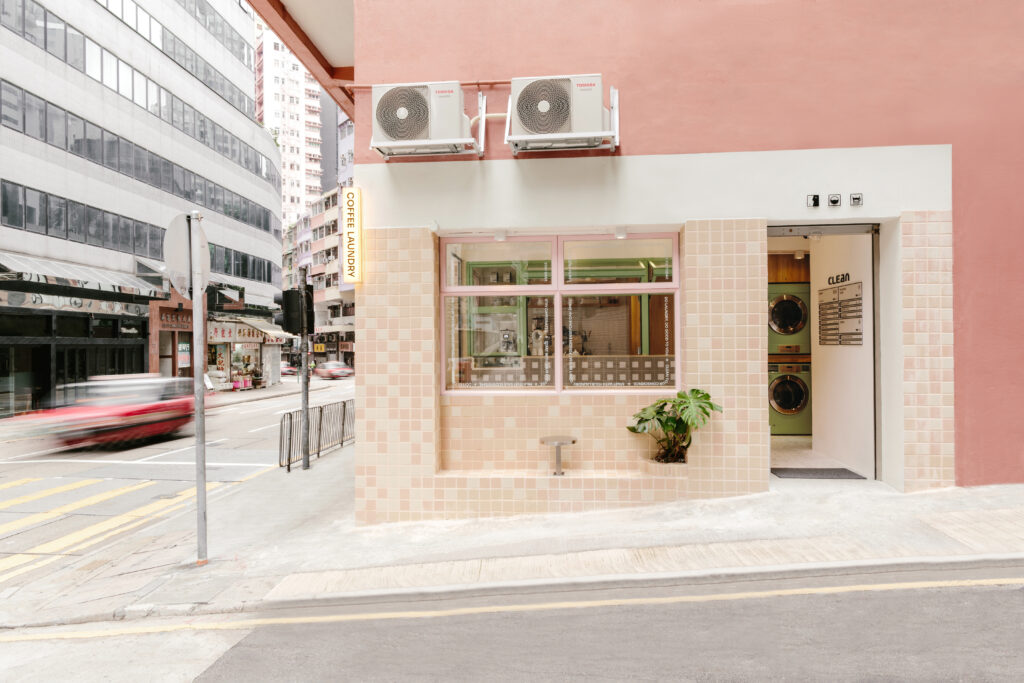
Our conversation is vast and varied, but here, we focus on rebranding sustainability, Hong Kongers attitudes towards environmental issues, and how far customers have come.
This interview has been edited for clarity and lenght.
GQ: Why did you decide to open a store specifically in Sheung Wan?
CL: At that time, it was more of a passion project. Because I was talking about the topic of sustainability. I knew I needed to find a spot where people have a slower pace of life, and could sit down and chat and really appreciate it. If I was based in really busy places, like Central or Kowloon, then people would just grab-and-go, and they wouldn’t even bother thinking about it.
So we picked this spot, and at that time, in my head, I was thinking that a lot of sustainable shops are either green in colour and branding, or kind of very natural and comfortable. And why are we making, you know, sustainability such a boring topic? Let’s make it really fun with punchy colours, so that we can attract people into the concept. I want it to be pink, like funky, mismatched colours, mismatched tiles.
GQ: What made you decide to combine a coffee shop with a launderette?
CL: Laundry and coffee isn’t a very new topic in Hong Kong, I think there are actually maybe two or three places that do it – but they usually do it very differently, in a way where it’s very separate. So the laundry shop is just attached to the coffee shop. So when I was thinking about it, I was like: “Okay, if I want to promote the concept of sustainability, I can’t really start from something that is so new to people. I need to start with things that people do already.”
And laundry and coffee were already things that people do regularly in Hong Kong, because our flats are very small usually, with lots of expats. So if people don’t have their own laundry machines at home, they will go outside and do laundry. And obviously, Hong Kong consumes a lot of coffee. So, I was like: “Let’s start from these things that we already do, to minimise the amount of change they need to embark on, and have a more sustainable lifestyle.
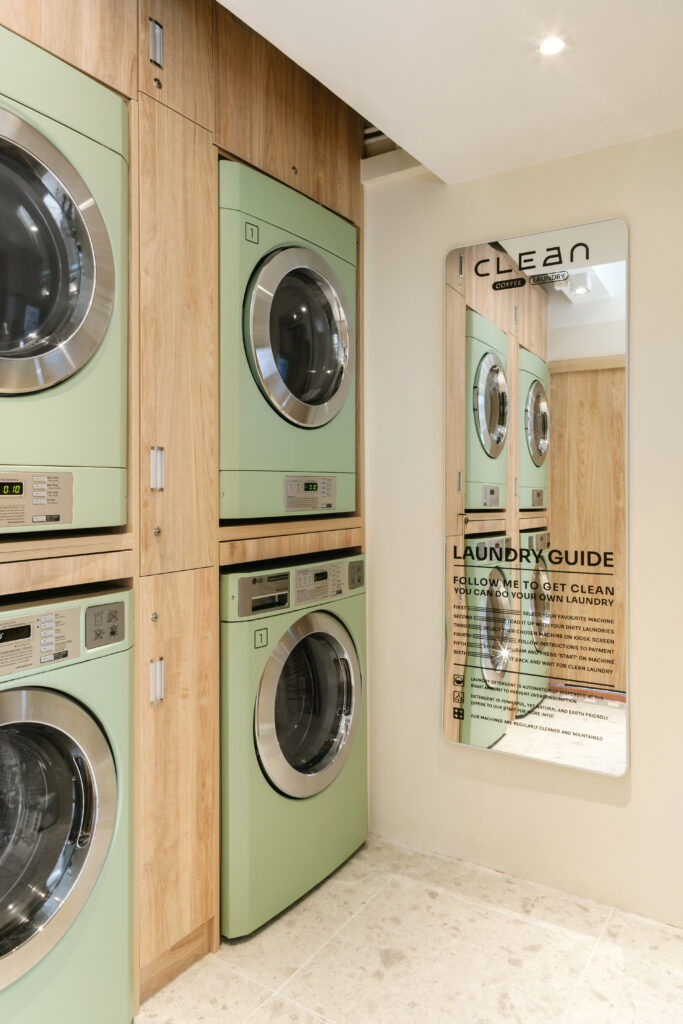
GQ: I want to ask about your espresso machine, the Astoria Storm, and its eco credentials.
CL: It’s a very old-school Italian company. So for them to come out with something a little more sustainable, it was like, wow. At the time, it was the most water- and energy-efficient in terms of these commercial-grade espresso machines. And what I also love about it is that 80% of the machine is actually recyclable. So they design it in a way that when it comes to the end of life, we can actually send it back to them, and they can recycle it and use its parts for other machines.
GQ: Where do you source your coffee from?
CL: We are a small company, so as much as we want to be able to buy it directly from the farmer – which is what I believe to be the most sustainable way from just a trade, welfare and environment perspective – we have small volumes, so we can’t really do that all the time. We do it with some beans, but otherwise, we rely on the Rainforest Alliance certification, which is probably the most well-rounded.
It’s not perfect, because at the end of the day, certification means farmers do have to pay for it. And there are a lot of restrictions around it. But since we launched, there have been a lot more new certifications coming out and a lot more new ways of helping farmers become more sustainable in their farming practices as well.
We try to support smaller farms, so once they run out or they’re moving on to different crops, then we start to look into who else we can change to. We have changed our beans in the last few years just because of supply and quality issues, because we source and formulate it, and ask our local roaster to roast the beans specifically for us. The main task is to really find the right profile to ensure it goes well with oat milk.
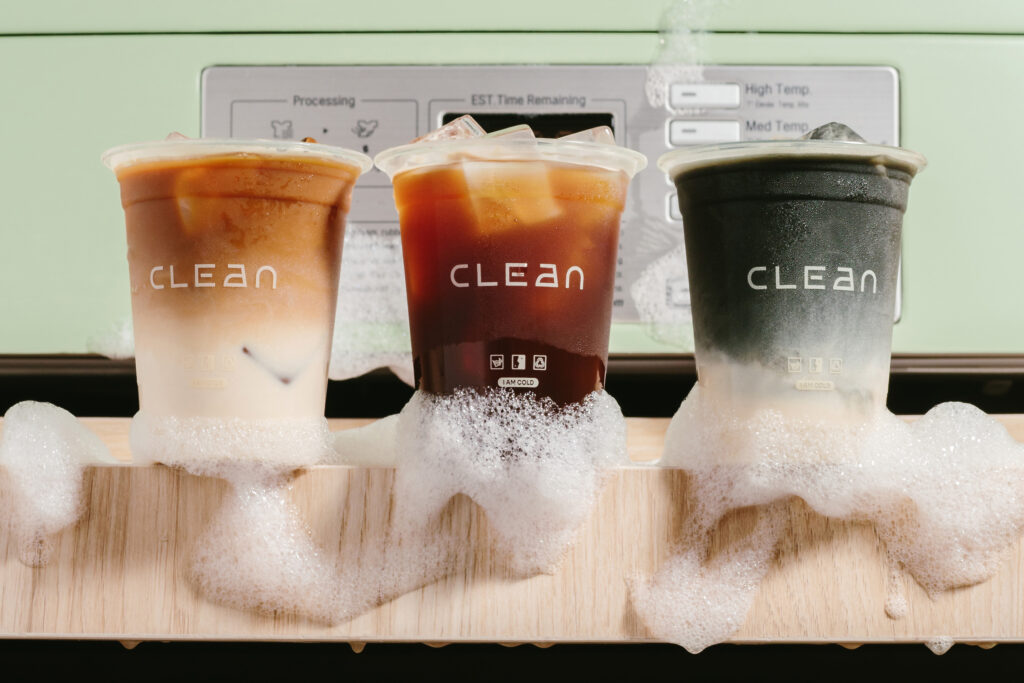
GQ: You use Oatly’s oat milk as default while charging a HK$2 premium on dairy. How do you manage that financially?
CL: Dairy milk is definitely cheaper. We have really good prices for Oatly because we’ve been such long-term customers with them. So they’ve reduced their price for us for a while. But usually it’s about 20-30% more expensive. Recently, there have also been new newcomers, like Oatside. So it pushes prices down a little. We stuck with Oatly because I think it tastes better with our beans. And you know, it’s not hurting the bank. So let’s keep going.
GQ: So is the extra cost built into the price of your drinks?
CL: We don’t really build in the cost, but we actually reduced our margin for every cup. Just because our ethos was to get more people to try oat milk, and tax people who drink dairy. But even then, we only add $2 extra for dairy milk, whereas people charge $5 or $6 more for oat milk outside. So I’ve been thinking maybe I should up my price for dairy to $5.
At the end of the day, we’re not here to say dairy milk is wrong, or you know, takeaway packaging is wrong, but we just wanted to start that educational journey where people start to realise, oh, dairy has a higher carbon footprint, and we usually find charging more [brings about] that conversation opener.
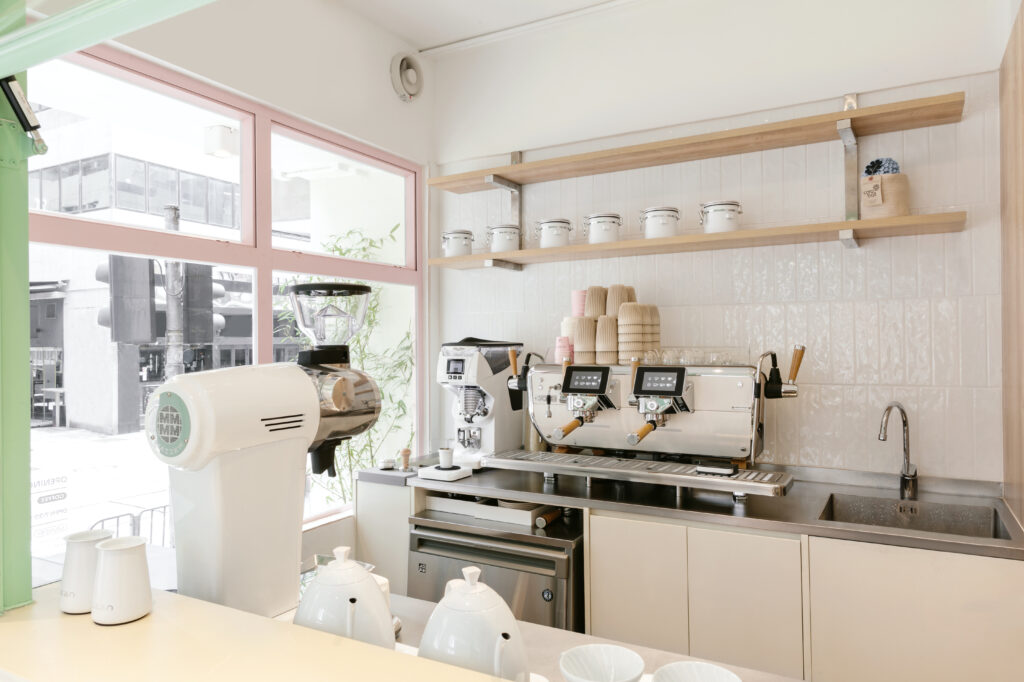
GQ: How do you tackle takeaway packaging?
CL: Rewarding you for bringing your own cup – where other people [reduce the cost by around] $3 – becomes a bonus, right? Because people will say: “Okay, well, I don’t have to do my own cup today. But when I do, I get a bonus.” Whereas here, we’re trying to standardise and say that actually, if you bring your own cup, that’s the standard. If you come and you don’t have your own cup, and you want to take it away, we’re not saying it’s wrong, but it’s just going to be $2 more, because there are so many different costs associated with this.
GQ: That must have been met with some backlash from customers. How did you manage to turn consumer perception around?
CL: When we first started, and we didn’t have the brand name yet, a lot of people really hated that. They were like: “What the hell? I’m going to another shop.” You have to try your best to explain why we do it – some people accept it. And some don’t. In the beginning, it was very hard to accept, like: “Oh, I’m going to lose a lot of customers.” But then on the other hand, you kind of feel like: “Actually, we’re filtering those who are not going to be our customers.” And that’s okay. We’re okay with that. Because when we first started, this was really just a passion project.
But organically, as more key opinion leaders started to come, as more media houses started talking about us, and more big companies started buying the concept, people started to slowly change. It was very organic. And it took a long time. But then you start to have customers who really stick, like when the typhoon hit last week. So many of our neighbours and community just came down because they were bored, and they just treated this as a second home. And I think that’s what makes you happy. Like, you created something that not everyone appreciates, but that’s okay. You’re not going to please everyone.
GQ: So have you seen customers coming around to the sustainability idea?
CL: Yeah, for sure. There are definitely customers – and I don’t want to be sexist or ageist – but usually, middle-aged men are like: “Ugh, oat milk.” You know? And then when you see them, and they come back, and they’re like: “Oh, I want your oat milk latte. You guys converted us.” That’s really nice to hear. That conversion is what makes you feel very proud of what you’ve created.
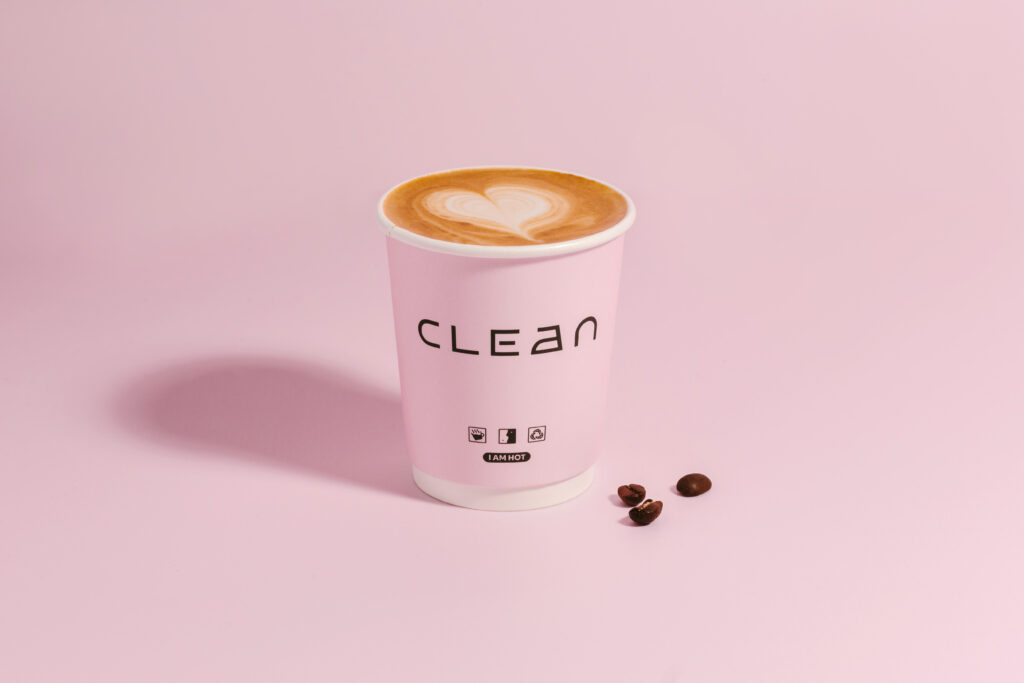
GQ: What’s your take on sustainability in food and beverage in Hong Kong? Has it evolved over the last few years?
CL: I don’t think so. There have been more shops talking about it and serving vegan food. But a lot of vegan shops don’t last. I think there are a couple of reasons. One is obviously just rent in general, it’s just so expensive here. People also don’t want to pay that much for what they perceive as just “vegetables”. And then Covid-19 hit a lot of places – only a few have really stuck.
It’s really more about how currently operational restaurants switch to more sustainably sourced ingredients. But then, it’s just so much more expensive.
GQ: Do you think there’s potential for that to happen?
CL: I think if the government steps in, there could be. There’s actually a lot of funding the government is putting out, but most of them are around technology, or huge projects on expanding overseas or upgrading your technology. And there is a fund that’s promoting companies to look at waste reduction and all that. But they have to be huge projects, so small companies can’t access this funding. And that’s where the government could break it down a little more, and support and fund small companies more.
If there are ways where the government steps in, then companies could really transition towards that selection. And once it becomes the norm, then it’s easier. If big companies are making the switch, then it’s much easier. But even the government pushing out the plastic ban – starting next year – this will make a huge impact.
I don’t know how much I can change how the environment goes, because you need a huge impact. Carbon footprint is not something one small shop can do. But I know a lot of associations are working with networks of coffee shops and food and beverage outlets to try and make that change, and I’ll leave that work to them. For us, we’ll be more focused on promoting oat milk. I think even with that, we can reduce a lot of carbon footprint already – by encouraging people to make the switch.


